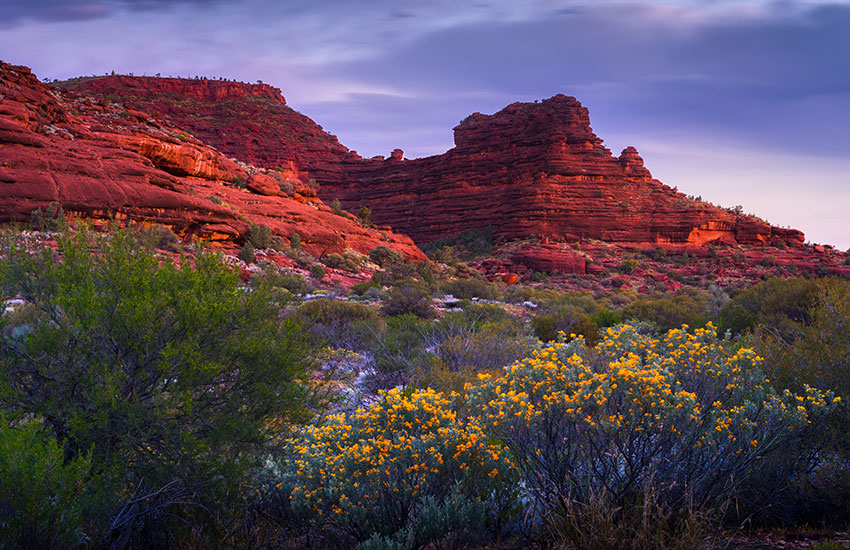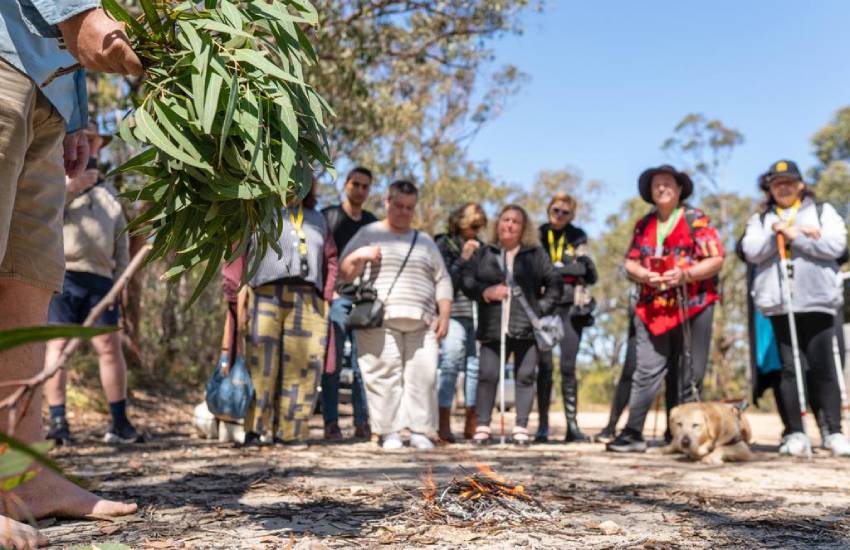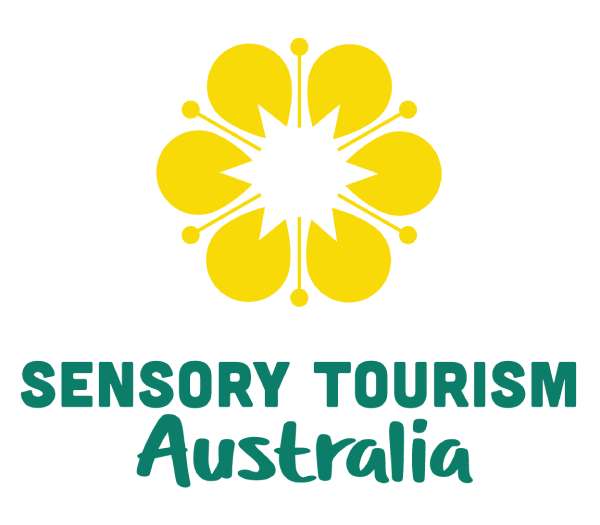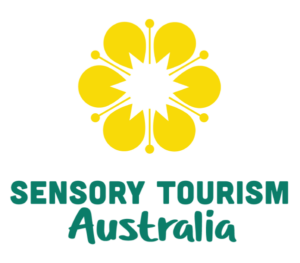About Australia
Location
Many people refer to Australia as the land down under. This is due to the country’s location far south in the Southern Hemisphere beyond Asia and towards Antarticia. Australia is considered the world’s largest island, but also the smallest continent, located between the Indian Ocean and the South Pacific Ocean in a region known as Oceania.
Australia is the sixth-largest country in the world by geographical land mass at a little over 7.6 million square kilometres or 2.93 million square miles. This is a similar size to the mainland United States or 31.5 times larger than the United Kingdom.
The shape of Australia would be similar to taking a ring and slightling squeezing the top and bottom of the shape towards the centre.
Red rock of the australian outback with a contrast of yellow wildflowers in the foreground

2 small red kangaroos with 2 in the background jumping away.

Geography
TWith its large land mass, Australia’s geography is very diverse. Almost 18% of the country is semi-arid deserts around the central and western regions of Australia. With snow-capped mountains of the Australian Alps in the south east corner of the continent, to the extreme wet and dry seasons of the tropical north, it is important to understand the seasons and the type of climate that awaits you on your adventure down under. Traditionally Australia follows similar four seasons like countries in the Northern Hemisphere, however the seasons in the Southern Hemisphere are directly opposite those in the Northern hemisphere.
| Seasons | Months |
| Summer | December, January, February |
| Autumn | March, April, May |
| Winter | June, July, August |
| Spring | September, October, November |
Australia is made up of six states and two territories. They are
STATES
| State | Capital City |
| NEW SOUTH WALES | Sydney |
| VICTORIA | Melbourne |
| QUEENSLAND | Brisbane |
| TASMANIA | Hobart |
| SOUTH AUSTRALIA | Adelaide |
| WESTERN AUSTRALIA | Perth |
TERRITORIES
| Territory | Capital City |
| NORTHERN TERRITORY | Darwin |
| AUSTRALIAN CAPITAL TERRITORY | Canberra |
As a starting point for understanding the best time to travel, consider the areas north and close to the Tropic of Capricorn, the line that separates temperate and tropical climate zones, are best to visit in the dry season between 1 May and 31 October This would include Cairns in Northern Queensland, all of the Northern Territory and Broome in Western Australia.
Southern Queensland from Fraser Island (K’gari) south, all of New South Wales, Victoria and South Australia, Tasmania and Western Australia around Perth and the south west corner are year round destinations, however swimming is best in Summer from December to February.
Population
Australia is home to more than 25 million people and is recognised for its vibrant, multicultural population. Almost 4% of Australians are Aboriginal or Torres Strait Islanders, descendants of the 300 nations that made up Australia prior to European settlement in 1788, and are considered the oldest continuously surviving cultures in the world. Around 65% of Australia’s population is concentrated in Sydney, Melbourne, Brisbane, Adelaide and along the eastern and south-eastern coasts between Brisbane and Adelaide.
In Australia, it is estimated there are over 575,000 people who are blind or vision impaired currently living in Australia, with more than 70 per cent over the age of 65 and around 66,000 people who are blind.
Australia has many services for persons who are blind or have low-vision. You can find a list of services on the contact page.
A group of 9 travellers and one assistance dog experiencing an indigenous smoking ceremony

Sensory Destinations in Australia
Sydney
Sydney is a natural wonderland surrounded by the harbour and beaches, a remarkable coastal city. Ride a ferry across the harbour and take a walk along the Cabbage Tree Bay eco sculpture walk in Manly and discover 11 sculptures representing the area. Join a tactile tour through the world famous Sydney Opera House and learn about the materials that make this iconic building a masterpiece and the acoustics unique! But don’t forget to feel the difference between the bluestone that makes up the pylons of the Sydney Harbour Bridge and the sandstone of the Queen Victoria Building.
Blue Mountains
Visit the world heritage listed Blue Mountains to activate your sense of smell surrounded by tea trees at Wentworth Falls. Enjoy artisan lavender products from the locally produced Blue Mountains Lavender in Little Hartley, or take home a fragrant candle from Moontree in Leura. Take a ride on the world’s steepest railway at Scenic World!
Hunter Valley
Enjoy tantalising tastes in the Hunter Valley, one of Australia’s oldest wine producing regions close to Sydney. Enjoy a banquet of tapas crafted at Restaurant Kawul, influenced by local indigenous native produce accompanied by estategrown Semillon or Shiraz!
Melbourne
Melbourne is Australia’s cosmopolitan and culinary capital where your tastebuds can run wild whilst discovering the quirky laneways, hostoric archades and riverside precincts.
Mornington Peninsula
A relaxing and delicious gourmet adventure lies ahead. The Mornington Pensinsular is filled with farmgate growers and producers that offer a range of product including crisp cider and salty, creamy goats cheese.
After a day of indulgence, your can unwind and realx in the famous Peninsular Hot Springs with over 50 bathig poools.
Yarra Valley
Yarra Valley is Australia’s premier cool-climate wine region, perfect for Chardonnay, Pinot Noir, Cabernet Sauvignon, Shiraz, and méthode traditionnelle sparkling. Beyond wine, visit Healesville, located in the centre of the valley to explore art galleries, artist studios, boutique shops and discover fresh regional produce from local growers and makers.
Cairns
Cairns is the access point for two major iconic World Heritage sites of North Queensland – the Daintree Rainforest and Great Barrier Reef. Blind traveller Charlie shares his sensory experience at each of these iconic areas
Daintree Rainforest
There is no better way to get to an understanding of a new place than hearing stories from the Indigenous people and their connection to the world’s oldest rainforest.
Great Barrier Reef
Visit a Great Barrier Reef island, snorkel direct from the beach, ride a semi-sub into deeper waters and learn about the Great Barrier Reef ecosystem in the tidal rock pools on an island walk with a Master Reef Guide.
Uluru (Ayres Rock)
To understand the significance of Uluru to the local Aboriginal people and learn about the
Anangu culture, a visit to the Uluru-Kata Tjuta Cultural Centre is a must. At Voyages Ayres Rock Resort, there are many free, immersive activities. You can learn about Australian and local bush tucker and how for many centuries local Indigenous groups would hunt, gather and prepare these bush foods. Feel and taste them as you learn. Listen to the stories of Aboriginal culture and tradition and to the enchanting sounds of the didgeridoo.

